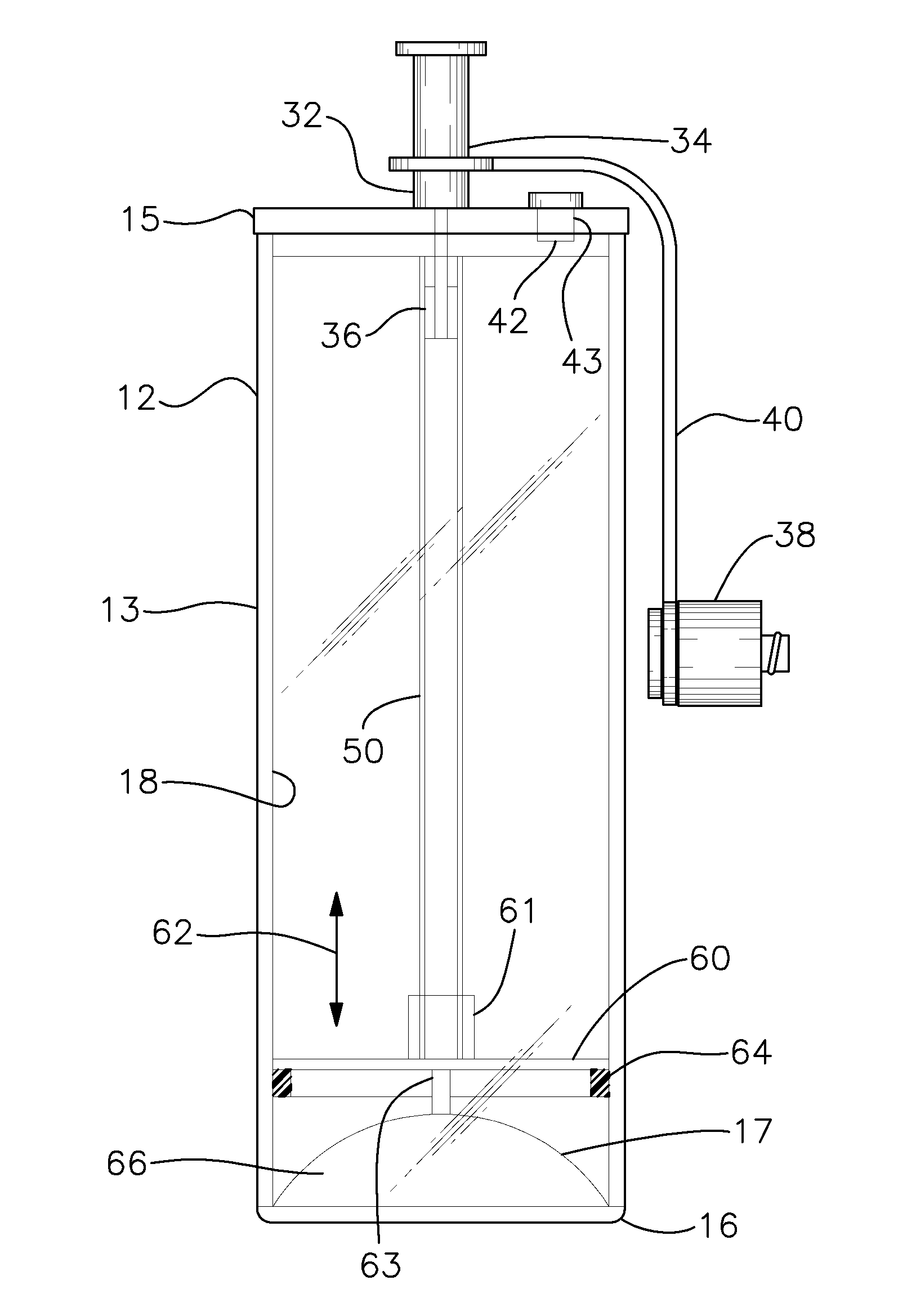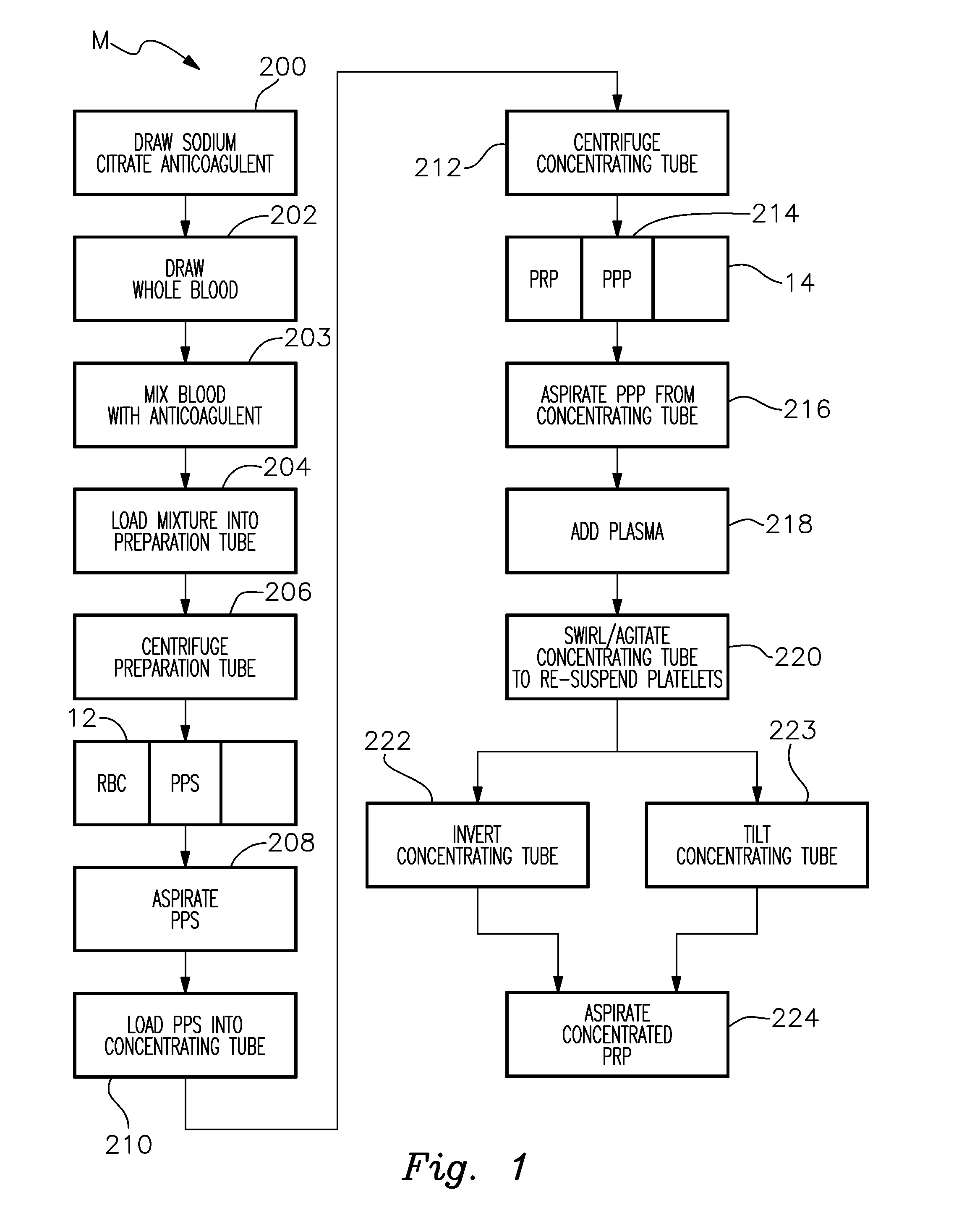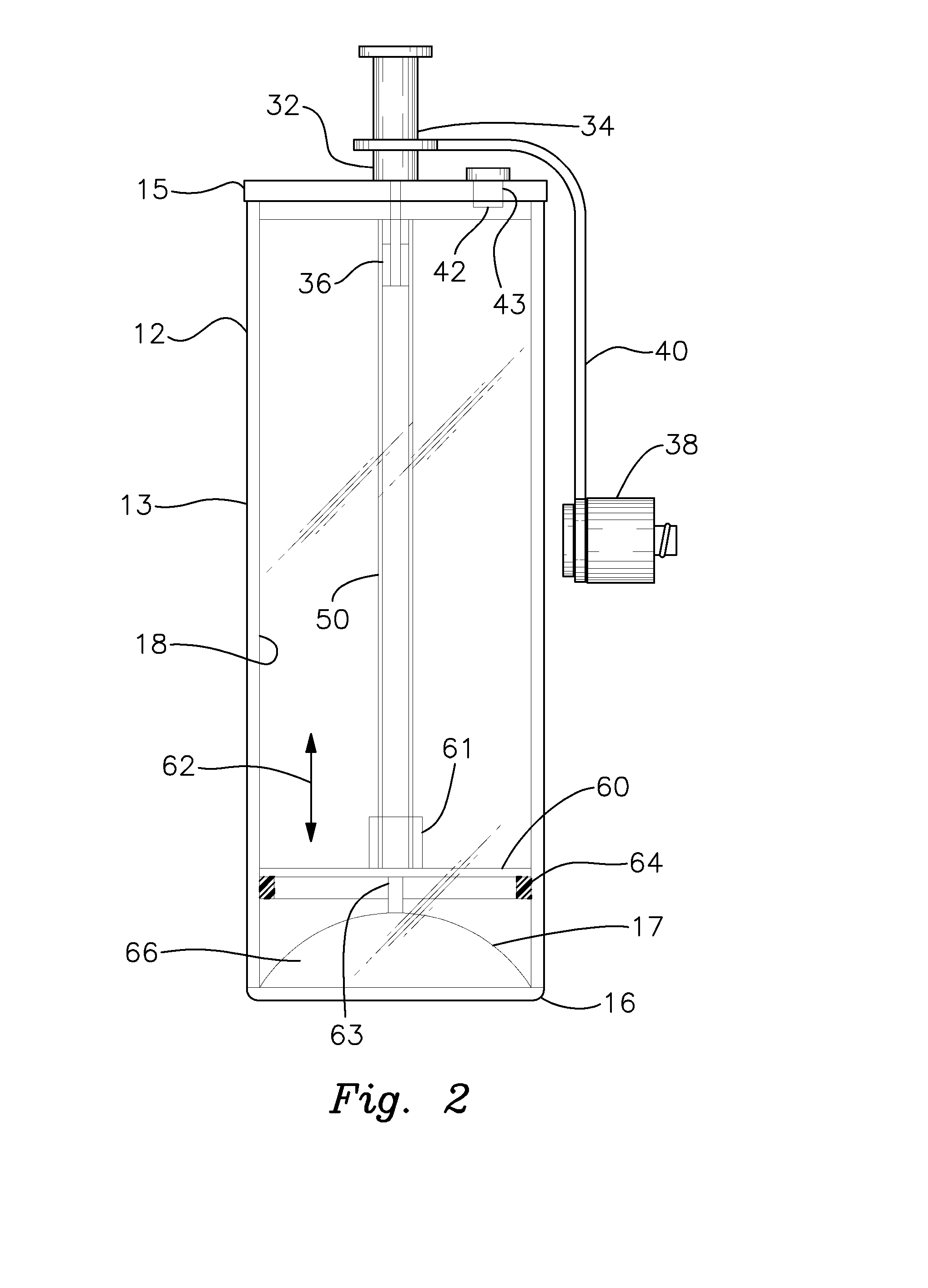Platelet Concentrating System
a platelet concentrating and platelet technology, applied in the field of platelet concentrating system, can solve the problems of frequent cross contamination between the constituent blood components, inability to provide satisfactory platelet concentration, and excessive levels of red blood cells in the majority of the current produced prp, so as to facilitate the absorption of the remaining prp
- Summary
- Abstract
- Description
- Claims
- Application Information
AI Technical Summary
Benefits of technology
Problems solved by technology
Method used
Image
Examples
Embodiment Construction
[0034]There is shown in FIG. 1 a block diagram illustrating a method of concentrating blood platelets to provide a more concentrated and effective platelet-rich plasma for use in wound healing, oral surgery, bone regeneration and various other medical procedures. The method is performed using a novel combination of various conventional devices, which are currently available and previously used in the manufacture of PRP as well as newly modified and improved devices for use in practicing this method. These devices more specifically include a preparation tube 12, shown alone in FIG. 2, and a concentrating tube 14, shown alone in FIG. 3, as well as other standard components including syringes and centrifuges, which are previously employed in this field. The construction and operation of preparation tube 12 are largely disclosed in US Patent No. '796. The Genesis™ Centrifuge Tube manufactured by Emcyte Corporation is especially effective preparation tube for use in the present invention...
PUM
| Property | Measurement | Unit |
|---|---|---|
| volume | aaaaa | aaaaa |
| volume | aaaaa | aaaaa |
| volume | aaaaa | aaaaa |
Abstract
Description
Claims
Application Information
 Login to View More
Login to View More - R&D
- Intellectual Property
- Life Sciences
- Materials
- Tech Scout
- Unparalleled Data Quality
- Higher Quality Content
- 60% Fewer Hallucinations
Browse by: Latest US Patents, China's latest patents, Technical Efficacy Thesaurus, Application Domain, Technology Topic, Popular Technical Reports.
© 2025 PatSnap. All rights reserved.Legal|Privacy policy|Modern Slavery Act Transparency Statement|Sitemap|About US| Contact US: help@patsnap.com



